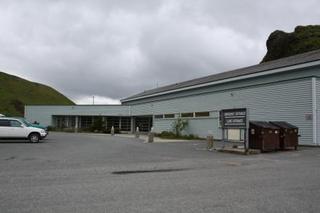Pilot Program Extends Rural Healthcare

Monday, December 05 2011
Most of us take it for granted that if we have a heart attack on a Sunday or lop off a finger while making grilled cheese in the middle of the night, there will be nurses and doctors available to take care of us at the Iliuliuk Clinic.
That’s actually a fairly unusual expectation. In other parts of the country, clinics are responsible for short-term, non-life threatening care, usually only during business hours. It's hospitals that operate around the clock and take care of more urgent medical needs. Of course, the nearest hospital to Unalaska is in Anchorage, so the Clinic fills that role after dark or in bad weather, when medevac planes can’t fly.
But it turns out that because IFHS is just a clinic, it doesn’t get to charge insurers more for those services, even though providing them means having more staff and more complex equipment.
Congress recognized this discrepancy in 2003 and launched the Frontier Extended Stay Clinic Demonstration Project. The Iliuliuk Clinic became one of six national ‘pilot’ communities in 2007.
Under the program, rural clinics that are more than 75 miles from acute care essentially become mini-hospitals, with the associated staffing and equipment. In exchange, the federal government offers grant money. Finance Director Tom Smoll says the Clinic receives $300,000 annually through the project.
In 2010, the government took the program a step further and started allowing the six pilot clinics to bill Medicare at higher rates. Private insurers usually follow Medicare's lead, so it could mean big changes in the way the Clinic can bill insurance companies in the future.
Dr. Clinton MacKinney was in town on December 2 to evaluate the success of the Medicare portion of the program in Unalaska. His review will help determine whether the program should spread to other rural areas in the United States.
Nurse Practitioner Laura Ballou says treating the Clinic like a hospital is only logical for a community like Unalaska, and not just for emergency care.
“By the same token, if we have a patient, like he’d mentioned, that has a problem that maybe they need hospitalization for 24 hours or so and then they are okay, the burden of the cost for a flight to get them to Anchorage where they are going to stay in the hospital for a day and then come back is ridiculous compared to being able to keep them here for 24 hours, get the IV antibiotics, get them corrected and send them back home.”
Dr. MacKinney will be assessing the program’s success in situations like that one. He’ll also be looking at how practitioners feel about the additional responsibility of caring for critical or longer-term patients and whether patients receive adequate care while being treated at the Clinic, as opposed to a larger facility.




Bob Duis on Friday, May 25 2012:
attempting to get an email to Laura Ballou - got laurasp@yahoo.com but it was not a valid address - concerning a galvanic crab pot float timer - please have her contact me.